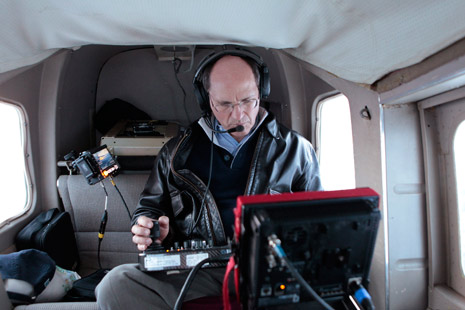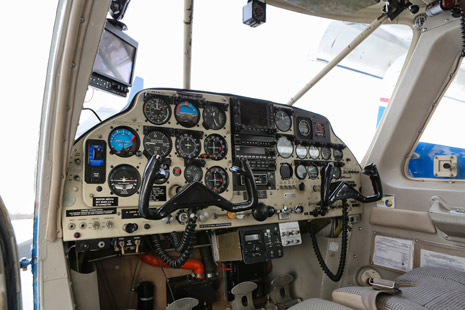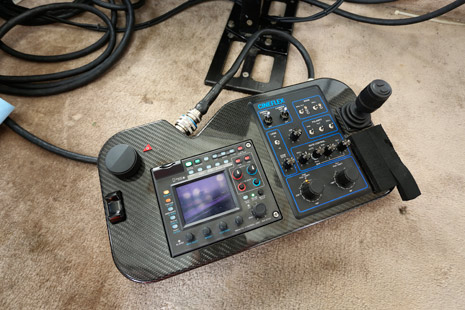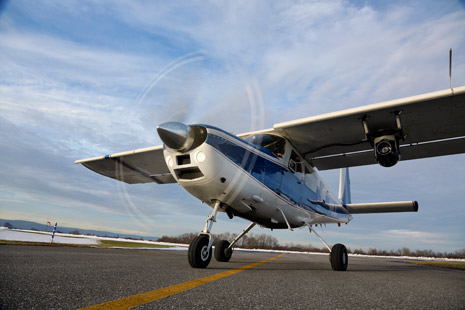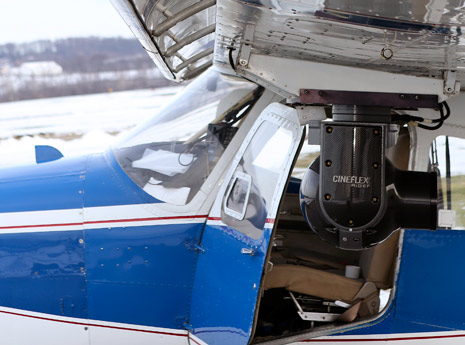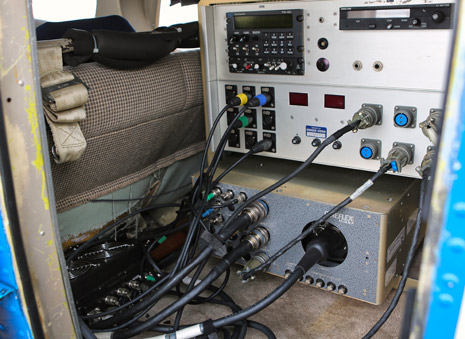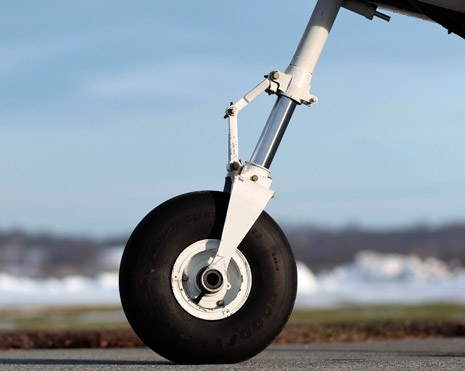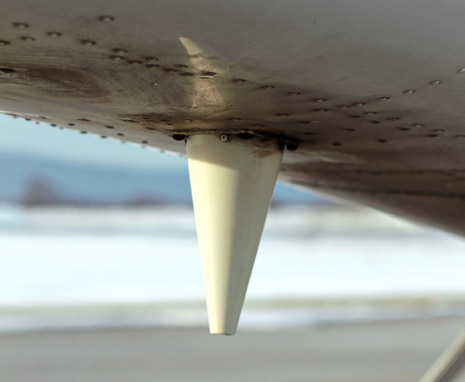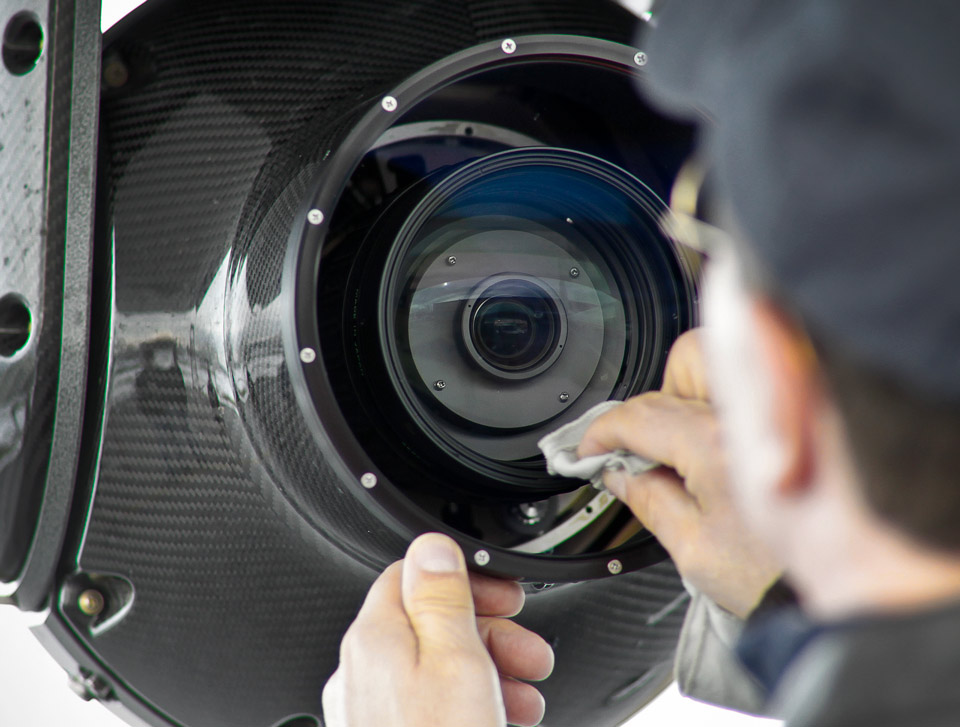
You say you’re a big sports fan; would like to see major sporting events from a different perspective; and like the idea of flying a rare, classic general aviation airplane? Then you’d love flying for Winged Vision Incorporated. Winged Vision says it’s the world’s largest sports aerial photography company, and it relies heavily on its two Helio Courier H-295s to feed television networks with video imagery of a wide variety of sports events. Winged Vision’s president, Robert Mikkelson, says his company covers roughly 150 sports events per year—sometimes flying six to seven jobs per week during the peak fall season. About 60 percent of those jobs make use of the Helio Couriers. The rest involve Mikkelson using one of his high-definition camera rigs aboard MetLife’s blimps—Snoopy One and Snoopy Two—or one of Goodyear’s blimps.
What’s it like to fly a Helio Courier? I have flown with Winged Vision covering the 2000 U.S. Senior Open Golf Championship (“Helio’s Macho Machines,” January 2001 AOPA Pilot) and I can tell you that it’s both a rush and a very specialized kind of flying. To know what I mean, you need to know a little about the Helio Courier.
Macho roots
About 500 Helio Couriers were built in Pittsburg, Kansas, mainly for the U.S. military, from 1954 to 1974. These are extremely sturdy, 120-knot, 3,600-pound STOL (short takeoff and landing) taildragger airplanes (although 19 tricycle-gear versions were built) powered by a single 295-horsepower, six-cylinder Lycoming GO-480 engine with a propeller gearbox that allowed takeoffs at 3,400 rpm. They saw plenty of covert action under the U-10 military designator throughout Southeast Asia (especially Laos) during the Vietnam War. If you wanted to deliver or extract military assets to or from tiny, native-built mountaintop clearings in contested territory, then the Helio’s your airplane. Take off or land in 500-foot-long unimproved clearings and clear 75-foot trees? Not usually a problem. One yarn asserts that someone flew a Helio out of the Pentagon’s central courtyard.
This STOL performance comes courtesy of a big wing area (231 square feet); full-span, automatically deployed leading edge slats; and huge flaps. At high angles of attack the slats pop out to preserve airflow over the wing. This feature lets you climb at ridiculously high angles, fly at critically slow airspeeds, and take off or land at airspeeds as low as 40 knots—all without the danger of stalling.
These are zoom cameras, of course, with a one-half-degree field of view that yields the optical equivalent of a 50- to 2,000 millimeter zoom lens on a personal handheld digital camera. An optical doubler can even bump that up—to the equivalent of a 100- to 4,000-millimeter lens. “I can’t read license plates from 5,000 feet, but I can certainly see everything of interest in the goings-on below,” Mikkelson said.
Camera controls at his workstation in the back seat include a joystick for aiming the camera, plus two controls for manually compensating for drift in azimuth and tilt.
“The camera is gyro-stabilized in space, so I have to manually adjust for the airplane’s drift across the ground,” Mikkelson said. “This way it looks like the camera is locked into a single point on the ground.” Meanwhile, he uses the joystick to follow any action. I saw him track golf drives perfectly from tee to fairway, or green, or—elsewhere. One time officials lost a player’s drive in the rough. Over the communications link to the ground, Mikkelson directed them to the exact spot where the ball had stopped.
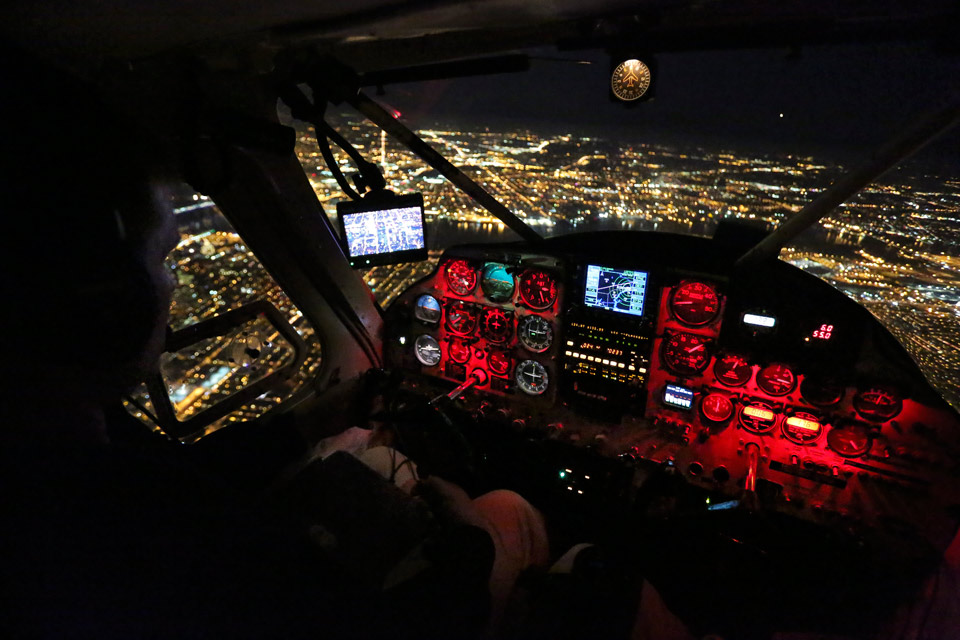
Other equipment includes a microwave transmitter for beaming video signals to a network’s ground receiver, and dual generators to ensure redundant power to the airplane’s considerable electrical-system demand.
No doubt about it, Winged Vision is proof of yet another value general aviation provides to the public. It’s something to think about the next time you’re sprawled in front of the tube watching that big game or golf match. Web: For additional information—and some great videos—visit Winged Vision’s website.
Email [email protected]
Yanking and banking
Those slats are vital to doing the sorts of steep turns I flew during the golf event. Here’s the scene: I’m up front flying at 1,500 feet agl and Mikkelson’s in back with his camera controls, aiming the wing-mounted camera to get the shots. My job was to go to a certain hole (I brought along a restaurant placemat showing the course layout as a “navaid”), then start circling overhead like mad at 45 to 50 degrees of bank and, oh, 60 knots or so. This way, we’d be more or less stationary over the area of interest. Both of us can hear the director’s commands over our headsets, and see what Mikkelson’s camera sees on cockpit video monitors.
Talk about ground reference maneuvers! You fly head-up, always making sure you compensate for any wind effects. Inevitably, one or both wings will reach the critical angle of attack and that’s when—bam!—one or both slats pop out. It’s startling at first, but it’s part of the job. Every couple of minutes the director will grab some of our video and put it on the air. It’s a great feeling, knowing that millions of people are watching your video. When Mikkelson covers Sunday-night National Football League games—the most-watched television shows—some 20 million people watch his work.
Not all of the flying is like golf. Many times, the target zones are much larger, as with the World Series, Nascar, Olympics, soccer games, and other sports he shoots. Sometimes, the television networks only want shots of the nearby scenery for use as cutaways during breaks in the live broadcasting. “Aerial photography courtesy MetLife,” the text may say. But behind that text is Mikkelson’s video of a cityscape—often taped days before the event. “And they don’t want old footage,” he adds. “They always want footage taken the week of the event. And they even match the time the footage was taken with the actual time during the broadcast, so that the light levels are synched up.”
The gear
Today, Helio Couriers are few and far between, but Winged Vision’s tricycle-gear airplanes (the nose gear is the same as that used in Cessna 310s) are especially rare birds. One, a 1967 model, was originally a taildragger that was converted to tricycle gear for use by the Civil Air Patrol. That airplane is based at the Chandler, Arizona, Municipal Airport and is used for events in the western United States. The other Helio is a 1974 model—and has the distinction of being the last Helio Courier to roll off the assembly line. It’s based at the Manassas, Virginia, Regional and Frederick, Maryland, Municipal airports.The company has two pilots—Joel Martin (based at Manassas) and Richard Crofton-Sleigh (at Chandler). Eighteen other employees and contractors round out the workforce.
As exotic as they are, the Helios serve as simple camera platforms. But what cameras! The company owns six gyro-stabilized video rigs; some are built by FLIR Systems, and some are Cineflex V14HD units. Each package of equipment—camera, motors, wing mount, and control panel—is worth approximately $500,000. The 60-pound motor-guided lens assemblies can be rotated and tilted in all directions, and are housed in a watertight turret affixed to the underside of the Helios’ left wing by a mount designed by Winged Vision (and which has supplemental type certificate approval from the FAA).
